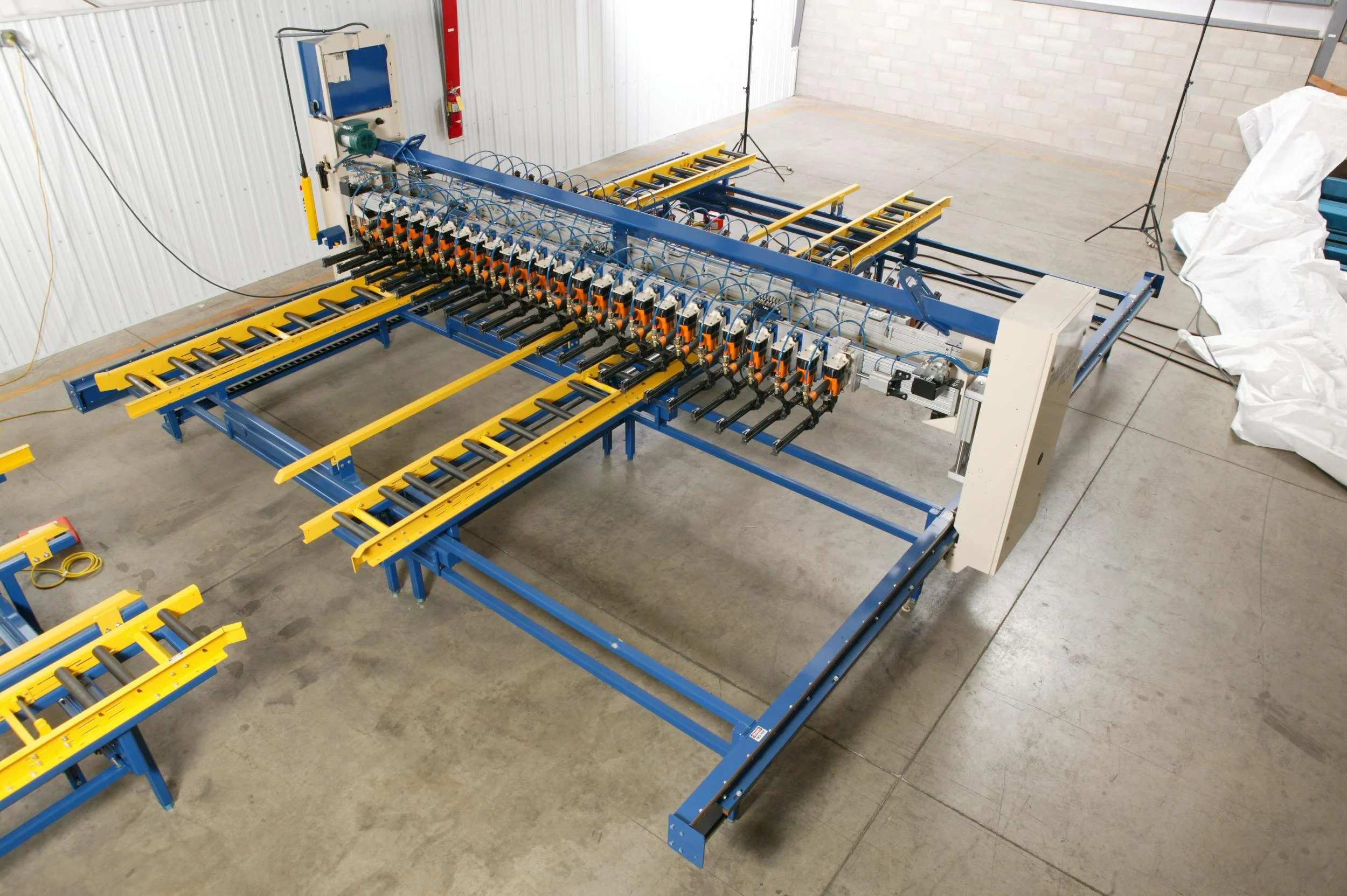




Information and Ideas
Information and Ideas
Why We're Here
Component Talk is a web site devoted to providing information and promoting ideas about prefabricated building components.
Components save time, reduce waste, and generally are a more efficient means of construction than building on site. Use of components has grown steadily in the past fifty years, and are on their way to becoming the overwhelmingly dominant form of construction in much of the world.
Trusses are strong, efficient structural components that can be designed in a vast array of shapes and configurations. The development of the press-in steel connector plate and sophisticated modeling and component design software has greatly expanded the use of wood trusses as a cost-effective building component.
Prefabricated wall panels speed construction, minimize waste, and promote consistent quality. Although they can be fabricated with only the basics structure of the wall in place, they can also be provided to include blocking for cabinetry, insulation, siding, and more.
Engineered wood products (EWP) and trusses both used in place of dimensional lumber to create roof and floor systems. EWP, usually in the form of I-beams can be provided precut or sent to the site in long lengths to be 'cut to length.' I-beams can have holes of various sizes to enable pipes, duct work, and wires to traverse the floor system.
Componentized structures can be combined together in the factory to create sections, which can further increase speed of installation and reduce waste.
Component Talk is for those interested in learning more about the world of building components.

Design
Design
Estimating
Customers expect quick turnaround on quotes, requiring both precision and speed. Debates rage about the best methods to arrive at an accurate estimate, but all agree that a good understanding of labor costs and overhead are important to knowing your break-even point. Building supply companies continue to seek ways to use modeling to do take offs of a wide range of materials.
Whole House
Modeling software has made great strides in the past several years, and now incorporates trusses, wall panels, engineered wood, and structural connectors. In addition, model-driven loading and an expansion of modeling software as a tool used to estimate sundry products puts modeling software and the BIM at the center of the discussions about the evolving state of construction.
Supply Chain
Good communication up and down the supply chain is essential for a harmonious construction process. The increasing popularity of 3D CAD software among architects is coupled with the increased ability of component designers to use that work as a starting point for their own designs. Component manufacturers are also using new tools to share their design work with customers and take 3D modeling into the field using portable tablet computers.

Manufacturing
Manufacturing
Staging
Preparing the materials, notably the lumber and plates, for the production process, is one of the most highly scrutinized process of component production. Picking and arranging materials for the saw, and staging the materials for building are two areas where thinking is more important than tools.
Cutting
The introduction of computerized saws, and more recently lineal saws, have made cutting one of the most automated aspects of component production. Recently, the focus has shifted from making things as easy as possible for the sawyer, to making things as easy as possible for the tables.
Building
Short runs and many setups have increased interest in lasers and automated jigging, which decrease setup time dramatically. Software tools exist to help managers plan production and answer questions about "When will the job be completed?" and "Are my people working at maximum efficiency?"
Pieces marked and staged after cutting
A typical production board

Machinery
Machinery
Truss Machinery
Saws, Tables, Conveyors, and Stackers represent the core components of a roof truss operation. Saws are classed usually as pull, lineal, and component. Tables as gantry or pedestal. Stackers can be vertical of horizontal.
Saws, tables, and nailers are the basic parts of a wall panel line. Saws include upcut, pull, and lineal, with and without plate marking systems. Tables can be inexpensive, self-made wood table up to multi-million dollar computerized systems. Nailing bridges speed the process of adding sheathing.
Component Saws
Component saws, like this MiTek CyberSaw, excel at cutting large numbers of pieces in a short time.
Stackers
Stackers eliminate the need for manpower to lift finished trusses from the conveyor system into a position to be banded and moved.
Floor Truss Tables
Specialized tables are used for the manufacture of floor trusses, combining building and final pressing into a single porcess.


